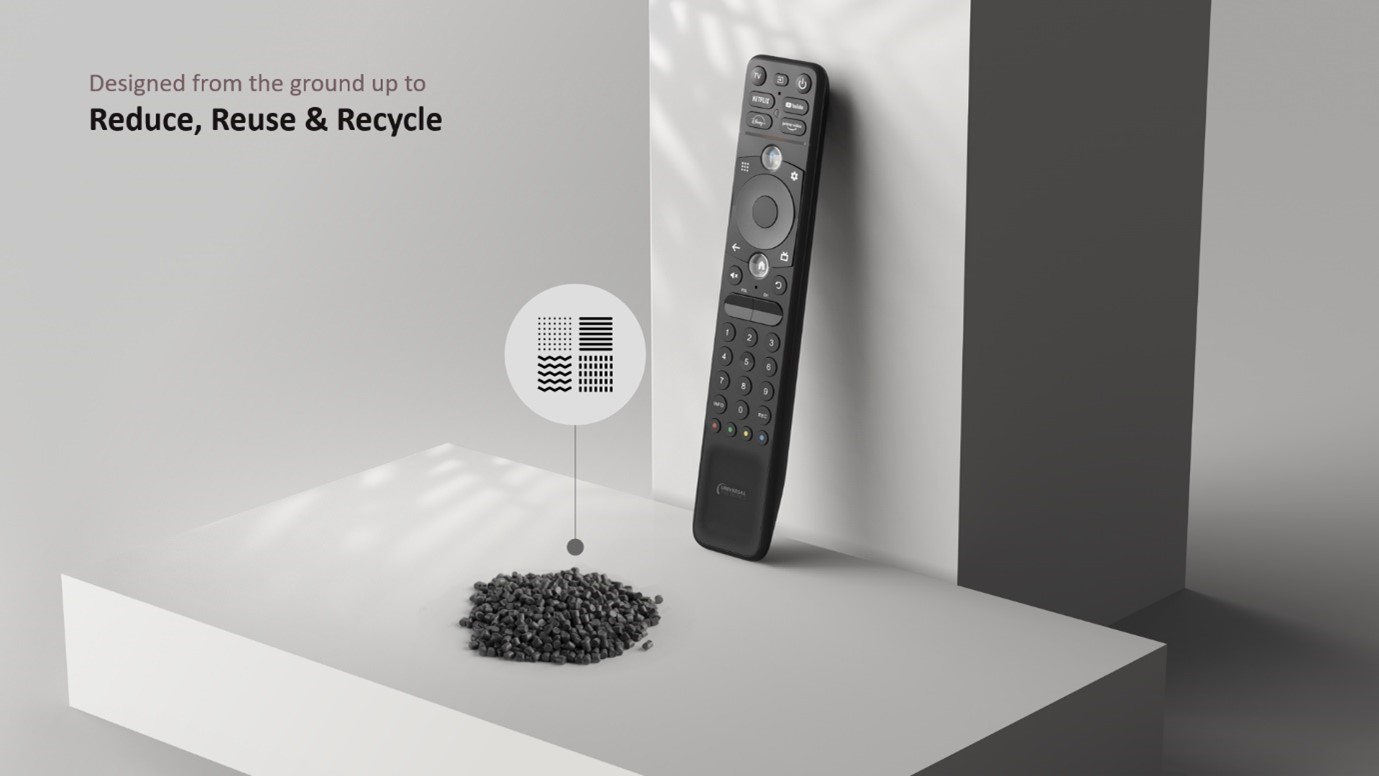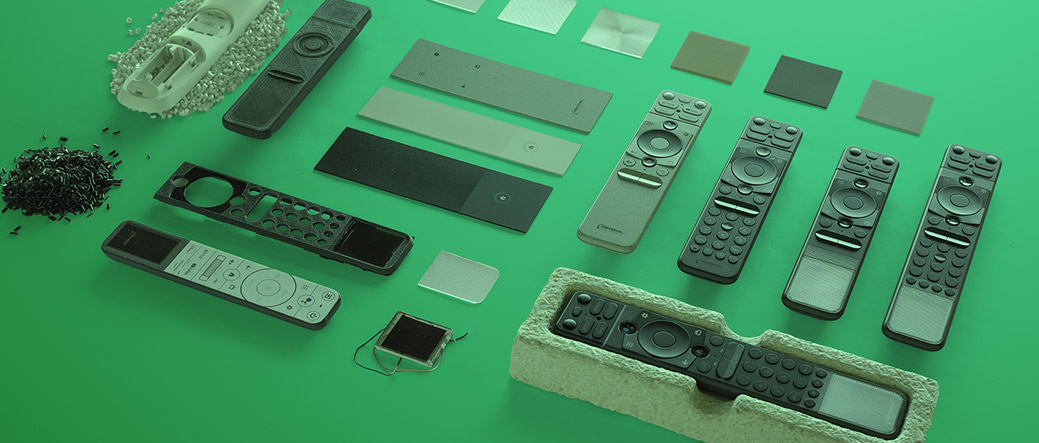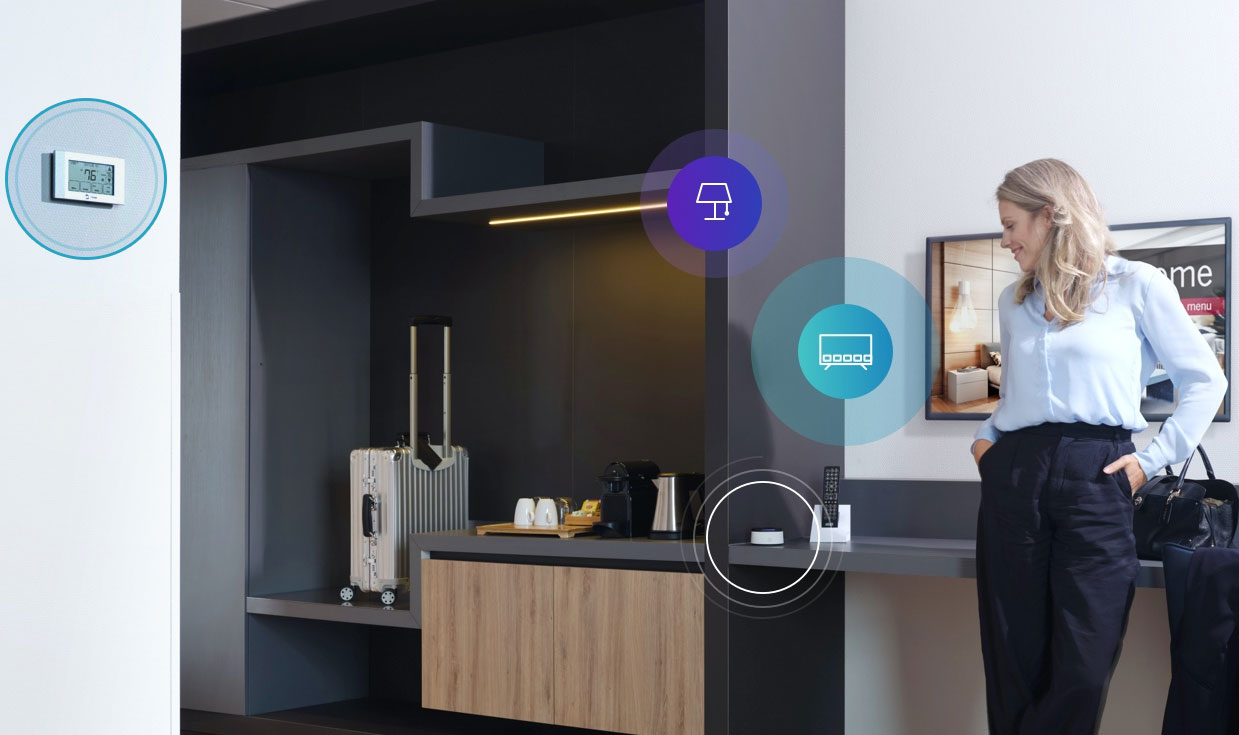March 30th is International Day of Zero Waste – a great day to put the spotlight on the UEI Eterna family of remotes. Here’s why.
A remote control is an electronic product that’s compact enough to hold in your hand (otherwise it wouldn’t be much use) and that’s got to be rugged enough to survive numerous drops onto the floor over many years of use. Naturally, the encasing – usually ABS plastic – makes up a big part of the whole.
ABS (Acrylonitrile Butadiene Styrene in full) is a common type of thermoplastic elastomer that lends itself well to recycling, not just excess material from manufacturing (referred to as Post-Industrial Recycling or PIR) but also from used products at the end-of-life stage. This is what we call Post-Consumer Recycling or PCR.
We work with various vendors of raw materials who can supply us with ABS granulate made from up to 95% PCR ABS. The virgin material is made from organic compounds, which are derived from fossil fuel, so by using recycled ABS we strongly reduce our reliance on such resources and make our products much more sustainable.
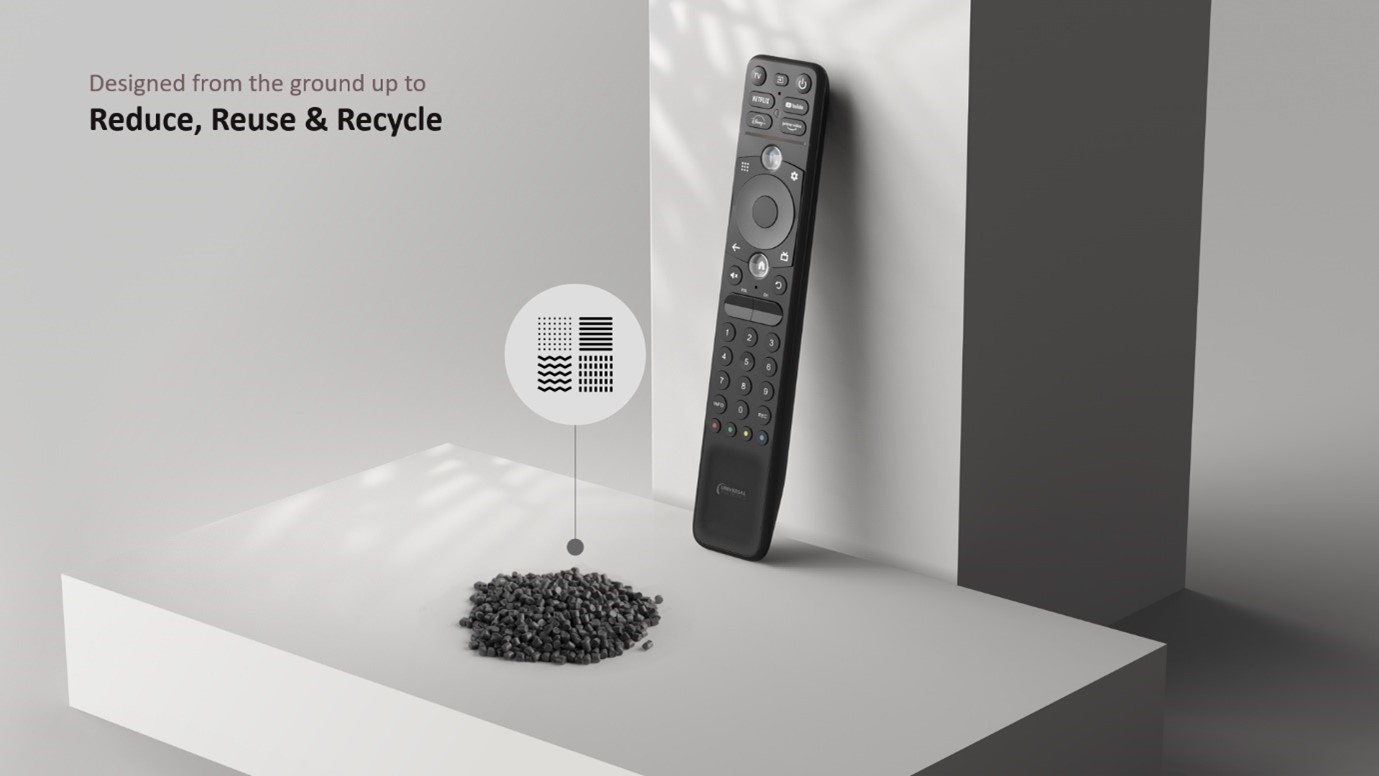
We’ve done extensive research and development to ensure that our products made from PCR ABS meet the same high-quality standards – being drop-proof, scratch-proof etc. but also meeting esthetics standards like the absence of flow lines on the surface.
Sometimes we need to adapt our designs a little to enable the use of PCR ABS. For years, we’ve made remotes without a ‘lens’ – the translucent window through which the infra-red light can pass, because even Bluetooth remotes typically have an IR LED as a fallback mechanism for when a remote has yet to be paired, for instance. We could save the lens because the ABS, which appears opaque to the eye, is transparent at the infra-red wavelength. When it’s virgin ABS, that is. PCR ABS does not have the same transparency, so we need to use a lens, or expose the LED on the outside of the remote.
It’s a small sacrifice for making a remote that’s much more sustainable.
We did not stop there, however. UEI developed packaging solutions that are free from Single-Use Plastics (SUP) at all levels – the individual remote, the box containing several dozens of remotes, and the pallets containing several dozen such boxes. More about that here.
And for the UEI Eterna family of remotes we’ve gone further yet.
The UEI Eterna is a remote with an Xtreme Low Power chipset – the SoC that powers the remote and controls the Bluetooth communication – called the UE961. It’s so much more efficient that for non-backlit remotes it extends the battery life from 2.4 years to more than the 7 years that forms the typical lifespan of a remote. This means that the user will not need to replace the batteries throughout its lifetime.
For regular backlit remotes, the average battery life is just about 1 year. That’s why we’ve equipped the UEI Eterna XLR with a photovoltaic panel. Thanks to the PV panel and the UE962 chipset, it can do energy harvesting to keep itself charged, instead of draining batteries.
Especially the High-Density PV Panel from Ambient Photonics, which is optimized for harvesting ambient light in living room situations, provides that much more output power that it allows a backlit remote to operate for 7 years straight without the user having to insert new batteries.
This is more convenient for the user, and far less likely to trigger customer support calls to the operator or the CE brand that supplied the remote to the consumer, it also saves heaps of disposable batteries that would need to be recycled but all too often end up in the waste disposal chain, where over time the chemicals could leak and contaminate groundwater. Not having to produce and recycle these batteries is better for the environment and saves tons of carbon dioxide emissions.
At the eventual end of its economic life, we can easily recycle a UEI Eterna remote. That’s because we’ve designed it for easy disassembly. With a simple operation, we can separate the outer plastics, the keymat, the PCBA, the HD PV panel and any other components, and refurbish the remote, reuse the components, or recycle the materials.
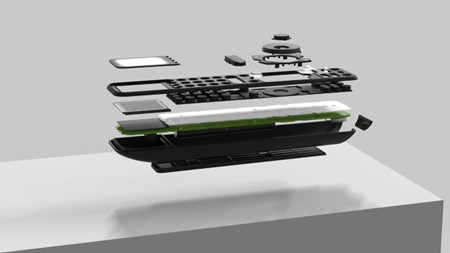
That’s why the UEI Eterna family is a poster child for sustainability.
We’ve just created a new White Paper that explains the Xtreme Low Power BLE chipset, the use of regular, amorphous silicon PV panels and dye-sensitized solar cells (DSSC) for ambient light harvesting, and even RF energy harvesting in much more detail:
Making remote control batteries last longer– much, much longer.
Learn more about PCR Plastics here.
Safe Harbor Statement
This blog post contains forward-looking statements that are made pursuant to the Safe-Harbor provisions of the Private Securities Litigation Reform Act of 1995. Words and expressions reflecting something other than historical fact are intended to identify forward-looking statements. These forward-looking statements involve a number of risks and uncertainties, including the timely development, delivery, technical performance, and market acceptance of products and technologies identified in this release; the purchasing by UEI customers of the UEI ETERNA products identified in this release in the quantities anticipated by management; the adoption of the energy harvesting and low power technologies identified in this release by UEI customers, the continued penetration and growth of UEI low power, energy harvesting, and other products and consumer technologies identified in this release; and other factors described in UEI’s filings with the Securities and Exchange Commission. The actual results that UEI achieves may differ materially from any forward-looking statement due to such risks and uncertainties. UEI undertakes no obligations to revise or update any forward-looking statements in order to reflect events or circumstances that may arise after the date of this release.

